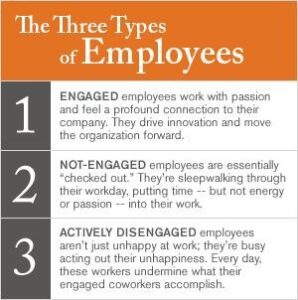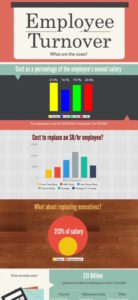Does your company have a formal Training and Leadership Development Plan? Or maybe even a casual one? We all want great employees that will be as passionate about our company as we are, and employees that are fully engaged and loyal, but are we investing in them to accomplish this? How much are you investing in your team compared to how much are you spending to get the best results out of them?
We spend so much time, effort and money looking for good employees, then we quickly toss them into the cubicle and expect great results. We also expect them to stay motivated and doing great work year after year without pouring back into them, or even taking the time during an annual review to even listen to them. Millennials are changing our way we think about treating employees and this generation is challenging leadership to spend more time coaching and communicating than prior generations demanded. I think this is a good thing and we just need to change the way we view our employees to meet this new standard.
Training and development is a good way to boost confidence and equip your leaders with the right skills. Investing in your team will benefit both the company and its employees. Zig Ziglar once said
“There is only one thing worse than training your staff, then having them leave, and that’s not training or developing them and having them STAY!”
Millennials do not always share the same work ethic and values the Baby Boomer generation has. That can be good in a time where creativity and innovation pay off with new concepts that disrupt the market and give us a lead over our competition. Developing great employees requires a plan that goes beyond the HR department and into the very core of who you are as a company and the culture you want them to model. (This topic would take me off target, but you can read about this in the great article titled The Cost of Great Leaders; Finding, Keeping or Losing Them.)
 According to the Gallup State of the Workplace Report for 2012, a staggering 70% of the workforce are not working to their full potential; 52% are not engaged, and another 18% are actively disengaged or engaged against you. (Click photo to read the article.)
According to the Gallup State of the Workplace Report for 2012, a staggering 70% of the workforce are not working to their full potential; 52% are not engaged, and another 18% are actively disengaged or engaged against you. (Click photo to read the article.)
A great way to engage your team is to have regular times of Leadership Development. Your employees will live out the culture you create for them or the one that just developed over time and you are stuck with.
Our job as leaders in our company is to give them a clear example to follow, a culture to aspire towards and to let them know they are being heard.
This requires you to live out a clear and compelling vision that your team can adopt and live out as a team and to the world. The difference between STRESS and PRESSURE is Vision so when your team knows the WHY of what we are doing, they move from confusion and stress to having the excitement and pressure to succeed. It’s YOUR job to create a clear and compelling vision that your team will embrace and live out each day. Do you have a plan to do this?
“Training is TOO Expensive”

When you think about the cost of training and developing your team, you should consider the cost of finding, building, and keeping great employees engaged and productive.
The average cost to replace a $30,000 a year employee is $4,800! From what I’ve seen that number is WAY too low but I’m just reporting what the stats show, your number will be much higher.
If you spend $400 a year for 10 years on training and developing your employee, it’s still less than finding a new one!
Add to this the cost of unemployment claims and the occasional lawsuit from a disgruntled employee once they leave. I’ve seen this add up to over $1 Million and a ton of distraction for the team.
Evaluate your team to determine what areas need your attention to create and maintain the leadership and culture you desire. Then invest in them as you do for capital and technology because the employees have more to do with your success than any other part of your business.
Oh, and while you’re at it, make sure to invest in yourself too so you stay on top of your game to be the best leader you can be. We often do not see the negative effect we have on our team and our own goals because we are too close to the issue to accept it. That is one of the reasons our group members meet each month to learn from other successful leaders and be accountable for the decisions and actions we take with our team. Come join us at our next meeting and see what I mean.
Robert Hunt